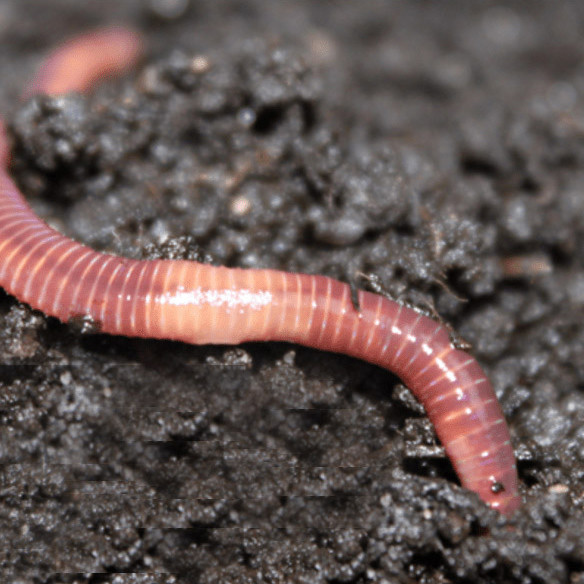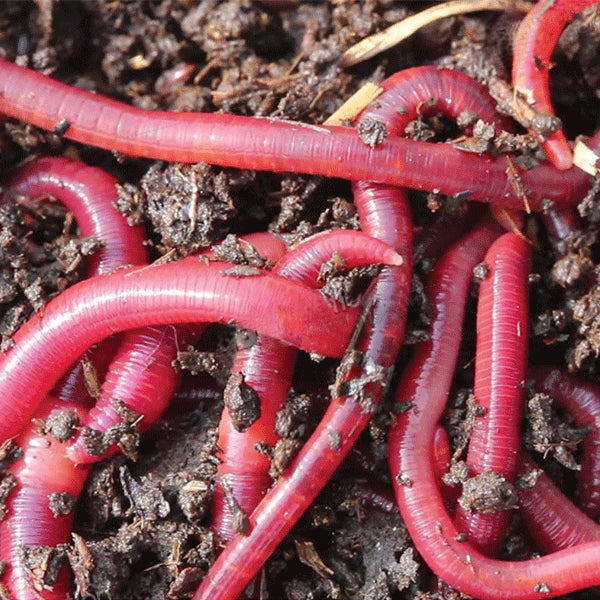Happy red wigglers: How to find them
Happy red wigglers: How to find them
Blog Article
Red Wigglers: Your Eco-Friendly Service for a Greener Garden
Red wigglers, or Eisenia fetida, offer a lasting approach to boosting garden health via vermicomposting. These worms not only help with the failure of organic waste but also add to boosted dirt structure and fertility. By incorporating red wigglers right into your horticulture techniques, you can successfully manage waste while supporting a lively environment (red worms). Nevertheless, the benefits prolong past simple composting; recognizing the nuances of their care and optimal usage can significantly boost your gardening initiatives. What vital practices can guarantee your vermicomposting system flourishes while optimizing its influence on your garden's vitality?
(red worms for sale)
What Are Red Wigglers?
Although often mistaken for regular earthworms, red wigglers (Eisenia fetida) are a distinctive varieties understood for their effectiveness in composting raw material. These worms prosper in abundant, organic environments, such as compost heap and vermicomposting systems, where they play a crucial role in breaking down waste. Unlike their more usual equivalents, red wigglers like a warmer habitat, usually between 55 ° F and 77 ° F, which optimizes their task and productivity.
Red wigglers are defined by their reddish-brown coloration and segmented bodies, which can mature to four inches in size. They possess an one-of-a-kind capacity to eat and digest organic products at an outstanding rate, processing approximately half their body weight daily. This rapid disintegration process not only improves the dirt yet also contributes to the general wellness of the yard community.
In regards to reproduction, red wigglers are respected, efficient in producing cocoons which contain numerous eggs. This permits quick populace development, making them a suitable choice for composting undertakings. Their flexibility and ravenous hunger for organic waste position red wigglers as a vital ally for environmentally aware gardeners looking for sustainable practices.
Benefits of Making Use Of Red Wigglers
Utilizing red wigglers in the garden uses various advantages that improve both soil quality and plant health. These earthworms are outstanding decomposers, damaging down raw material such as kitchen area scraps and yard waste right into nutrient-rich spreadings. These spreadings, usually referred to as "worm gold," supply important nutrients that improve soil fertility, advertising vivid plant growth.
Red wigglers additionally enhance soil structure. Their burrowing activity freshens the soil, assisting in better water seepage and origin penetration. This causes a healthier root system, which is important for nutrient uptake and overall plant vigor. Furthermore, the presence of red wigglers enhances microbial activity in the dirt, creating a growing community that adds to illness resistance and boosted plant health and wellness.
An additional considerable advantage of making use of red wigglers is their capacity to reduce waste. In summary, integrating red wigglers into horticulture practices yields considerable advantages, making them a useful enhancement to any eco-conscious yard.
(red worms)
How to Start Vermicomposting
To start vermicomposting, it's important to develop an appropriate setting for red wigglers to thrive, as their success directly affects the performance of the composting procedure. Start by choosing a container, such as a plastic or wood bin, with appropriate drain and air flow. A dimension of approximately 2 square feet is excellent for a house, permitting a workable worm populace.
Next, prepare bedding product that is wet but not extremely wet. Shredded paper, cardboard, and coconut coir are superb choices, supplying a comfy environment while additionally functioning as a carbon resource. Fill the bin with 4 to 6 inches of bedding.
After establishing the bed linen, introduce your red wigglers. A regular starting population has to do with 1 extra pound of worms, which can eat approximately half an extra pound of food scraps daily. It is crucial to include food scraps progressively, concentrating on vegetable peelings, fruit waste, and coffee premises, while staying clear of meat, milk, and oily foods to avoid smells.
Keeping a Healthy And Balanced Worm Container
As soon as your red wigglers are resolved right into their new bed linens, maintaining a healthy worm container ends up being paramount to make sure ideal composting conditions. Ideally, the worm bin ought to be kept damp yet not soggy; a moisture degree around 60-70% is ideal.
Temperature control is just as crucial. Red wigglers flourish in atmospheres in between 55 ° F and 77 ° F(13 ° C to 25 ° C) Prevent exposing the bin to severe temperatures; severe warm can eliminate the worms, while too much cold can slow their activity.
Oygenation is vital to avoid anaerobic conditions, which can cause undesirable odors and damage the worms. Transform the bedding carefully every couple of weeks to promote air movement and disperse food uniformly.
Feeding your red wigglers is another crucial facet. Deal a well balanced diet plan of kitchen area scraps, avoiding citrus and spicy foods, which can be harmful to their wellness. By regularly keeping track of these aspects, you can make certain a thriving community within your worm container.

Tips for Using Worm Spreadings
Frequently integrating worm castings into your yard can substantially boost dirt health and plant development. To successfully use worm spreadings, begin by identifying the proper application price, which generally varies from 10-20% of the complete dirt quantity. This guarantees ideal nutrient accessibility without frustrating your plants.
When using worm spreadings, mix them into the leading few inches of dirt Click This Link around well established plants or include them right into your seed-starting mix for brand-new seed startings. This method promotes origin development and enhances dampness retention. Additionally, consider creating a worm tea by steeping worm spreadings in water for 24-48 hours. This nutrient-rich fluid can be made use of as a foliar spray or soil drench, supplying an instantaneous increase to your plants.

Verdict
The application of red wigglers in horticulture methods offers a sustainable technique to waste monitoring and soil enrichment. These composting worms not only transform organic waste into valuable nutrients however additionally boost soil framework and advertise a healthy microbial environment. By embracing vermicomposting strategies, gardeners can effectively add to environmental sustainability while boosting plant health. The assimilation of red wigglers right into horticulture routines eventually sustains both ecological equilibrium and farming productivity.
Report this page